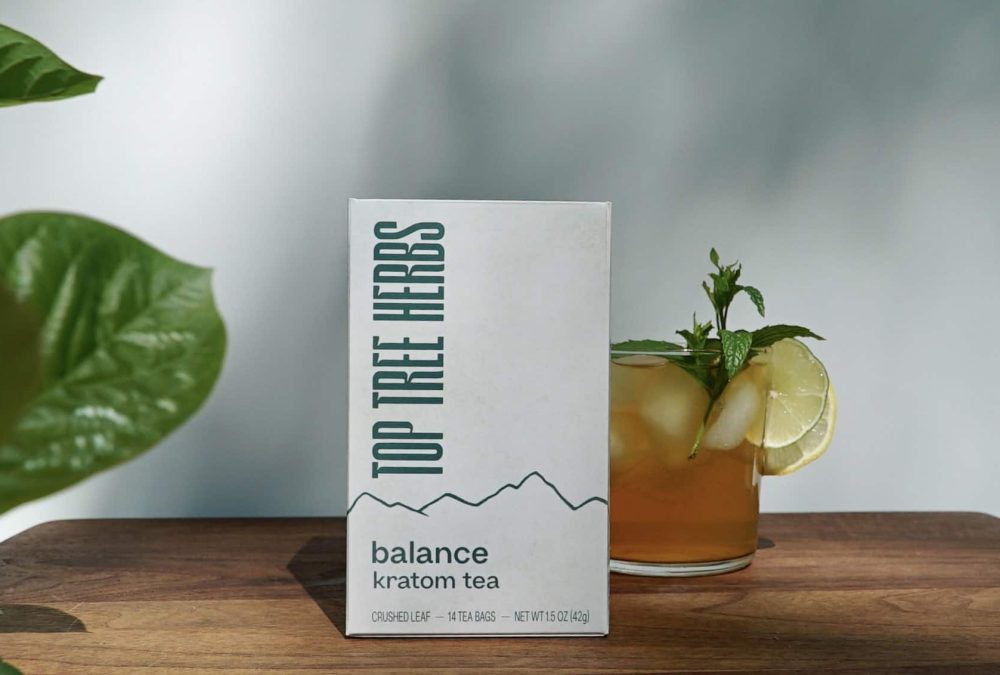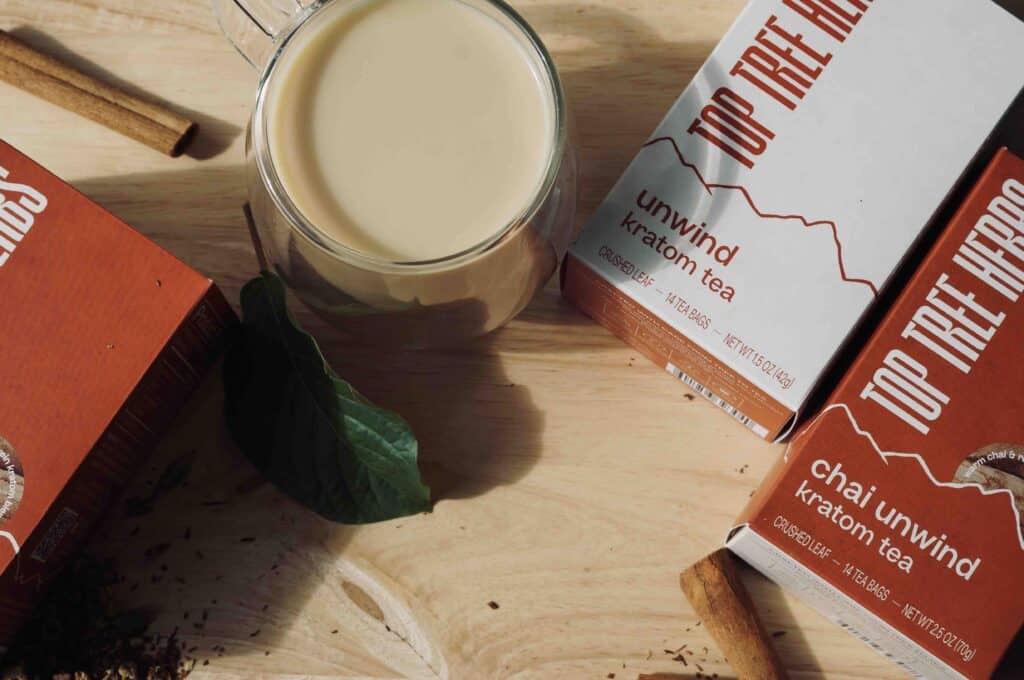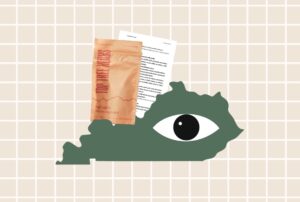Topics for Today:
- What is Kratom?
- What Is Kratom Tea?
- Types of Kratom: Strain Guide
- Which Tea Is Right For Me?
- How Do I Make Kratom Tea?
- When Should I Drink Kratom Tea?
- What Does Kratom Tea Feel Like?
- How Do We Ensure The Quality Of Top Tree Tea?
- What Makes Top Tree Special?
What is Kratom?
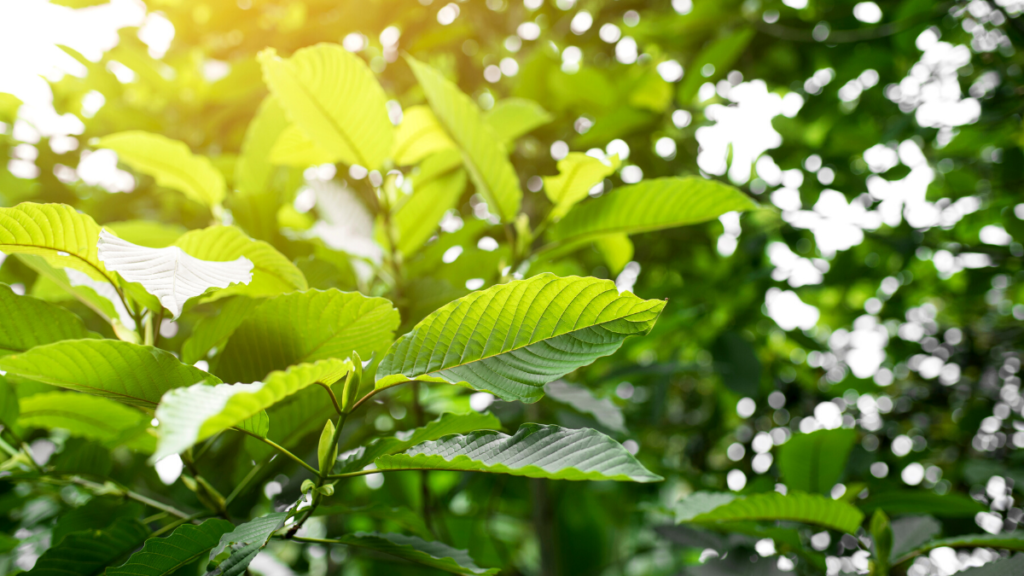 Kratom (Mitragyna speciosa) is an evergreen tree in the coffee family native to Southeast Asia. Based on written historical records, we know the leaves have been traditionally brewed into tea, or otherwise chewed and spat out, for hundreds of years. In all likelihood, the use of the leaves stretches back thousands of years.The traditional use of kratom centers around the Thai working class. Farmers and day laborers use it to help increase endurance and energize their day, similar to how coffee is used in the US today. Kratom helps boost the workers stamina and supports overall well-being during long laborious days in tropical heat.The immense cultural importance and popularity of kratom throughout the history of Southeast Asia should not be overlooked. The recommended use of kratom is etched in the walls of historic Buddhist temples, and popular street puppet shows praise the benefits of the leaf.
Kratom (Mitragyna speciosa) is an evergreen tree in the coffee family native to Southeast Asia. Based on written historical records, we know the leaves have been traditionally brewed into tea, or otherwise chewed and spat out, for hundreds of years. In all likelihood, the use of the leaves stretches back thousands of years.The traditional use of kratom centers around the Thai working class. Farmers and day laborers use it to help increase endurance and energize their day, similar to how coffee is used in the US today. Kratom helps boost the workers stamina and supports overall well-being during long laborious days in tropical heat.The immense cultural importance and popularity of kratom throughout the history of Southeast Asia should not be overlooked. The recommended use of kratom is etched in the walls of historic Buddhist temples, and popular street puppet shows praise the benefits of the leaf.What is Kratom Tea?
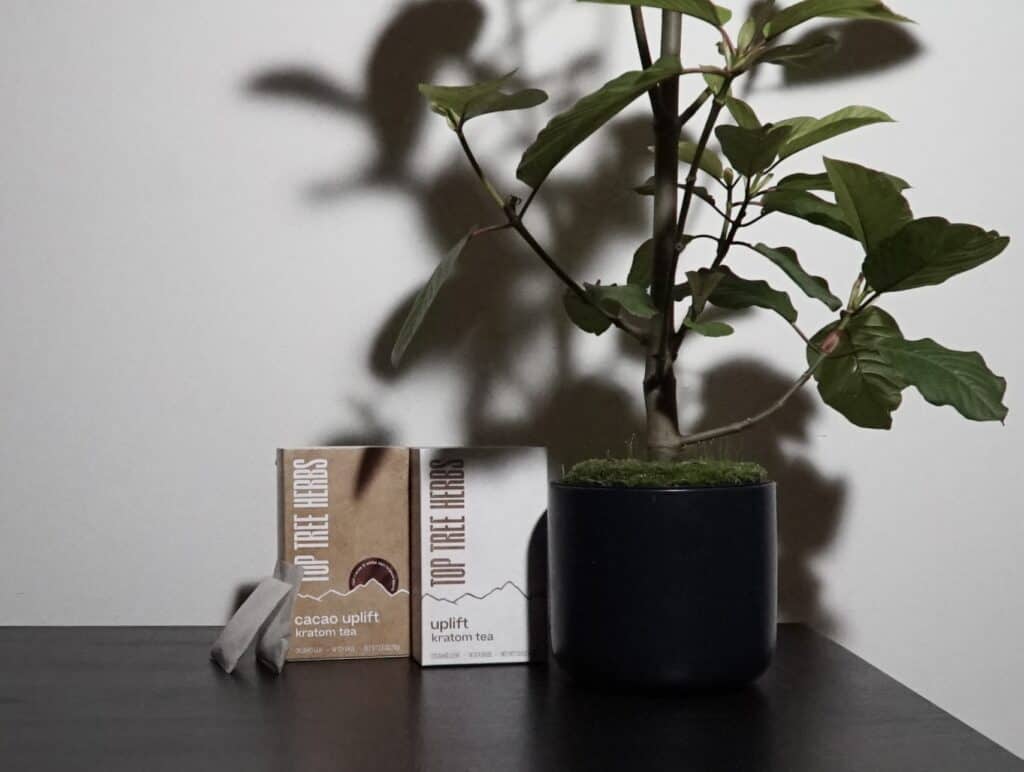 Drinking kratom tea is one of the two ways people traditionally consume kratom. Many of those living in kratom’s native habitat will simply pick a leaf fresh from the tree and briefly chew it while pressing the juices against their tongue and lips. When they don’t want to chew them, they add the leaves to boiling water to make tea.Kratom has been in the United States for less than half a century. Traditional kratom culture is relatively unknown and as such most US consumers eat the powder.The problem, however, is that swallowing kratom powder can lead to stomach discomfort (not to mention, the powder tastes extremely bitter and earthy).Plus, when you eat raw kratom powder you skip the sterilization process that you naturally do when boiling water used for tea. Clearly, a better method is needed.Tea is by far the most pleasurable way to consume kratom (though, of course, we’re a bit biased). Kratom tea has a distinct bitter, earthy flavor that quickly takes on a personality as you grow accustomed to it. One of the benefits of using tea bags is that you can customize it and add other flavors with other ingredients and complimentary herbs and spices.These flavors and herbs work in concert to increase the taste and effectiveness of your tea. Our herbal tea bags—crushed leaf kratom, either with just the raw leaf or blended with other traditional herbs—are engineered to complement specific activities.
Drinking kratom tea is one of the two ways people traditionally consume kratom. Many of those living in kratom’s native habitat will simply pick a leaf fresh from the tree and briefly chew it while pressing the juices against their tongue and lips. When they don’t want to chew them, they add the leaves to boiling water to make tea.Kratom has been in the United States for less than half a century. Traditional kratom culture is relatively unknown and as such most US consumers eat the powder.The problem, however, is that swallowing kratom powder can lead to stomach discomfort (not to mention, the powder tastes extremely bitter and earthy).Plus, when you eat raw kratom powder you skip the sterilization process that you naturally do when boiling water used for tea. Clearly, a better method is needed.Tea is by far the most pleasurable way to consume kratom (though, of course, we’re a bit biased). Kratom tea has a distinct bitter, earthy flavor that quickly takes on a personality as you grow accustomed to it. One of the benefits of using tea bags is that you can customize it and add other flavors with other ingredients and complimentary herbs and spices.These flavors and herbs work in concert to increase the taste and effectiveness of your tea. Our herbal tea bags—crushed leaf kratom, either with just the raw leaf or blended with other traditional herbs—are engineered to complement specific activities.Types of Kratom: Vein and Strain Guide
Most kratom companies use the same naming convention for their products. First is the “vein color” of the leaf, and this is followed by the “strain” which is a subcategory of vein colors.Kratom Vein Colors
The color is most often determined by how the leaves are dried and left to cure. Typically, there are three colors: white, green, and red. Some vendors may mix these colors to create novel colors, like yellow or gold.Kratom Strains: Myths & Reality
Next is the strain. Vendors often claim that the strain is the name of where the leaf was harvested or where the tree cultivar was originally found before being transplanted. For example, White Thai is a white vein kratom variety grown in Thailand, and Red Bali is a red vein grown in Bali. However, the purported origins of kratom strains may not be true in most cases.For kratom beginners, the sheer number of strains and colors can be confusing. Plus, the naming convention used by US kratom brands is an invention! The real difference between kratom products and their effects comes down to which alkaloids are present, the serving size of these alkaloids a person consumes, and each person’s unique physiology.Alkaloids are the compounds in kratom that create the majority of the effects felt from consuming kratom tea. So far, researchers have discovered over 40 different kratom alkaloids in kratom leaves. Usually, individual trees will contain roughly 10 alkaloids, with three or four dominating.Strain Differences & Alkaloid Contents
Given the complexity of kratom as a natural product, the alkaloid ratio in products with the same name, but of a different harvest, can be completely different. This is why we recommend staying open-minded rather than settling on one strain.Related: Best Kratom Strains: Are Kratom Strains Real?
To reduce the confusion, Top Tree’s newest kratom teas use just vein colors, not strains, and have the alkaloid content printed on every box!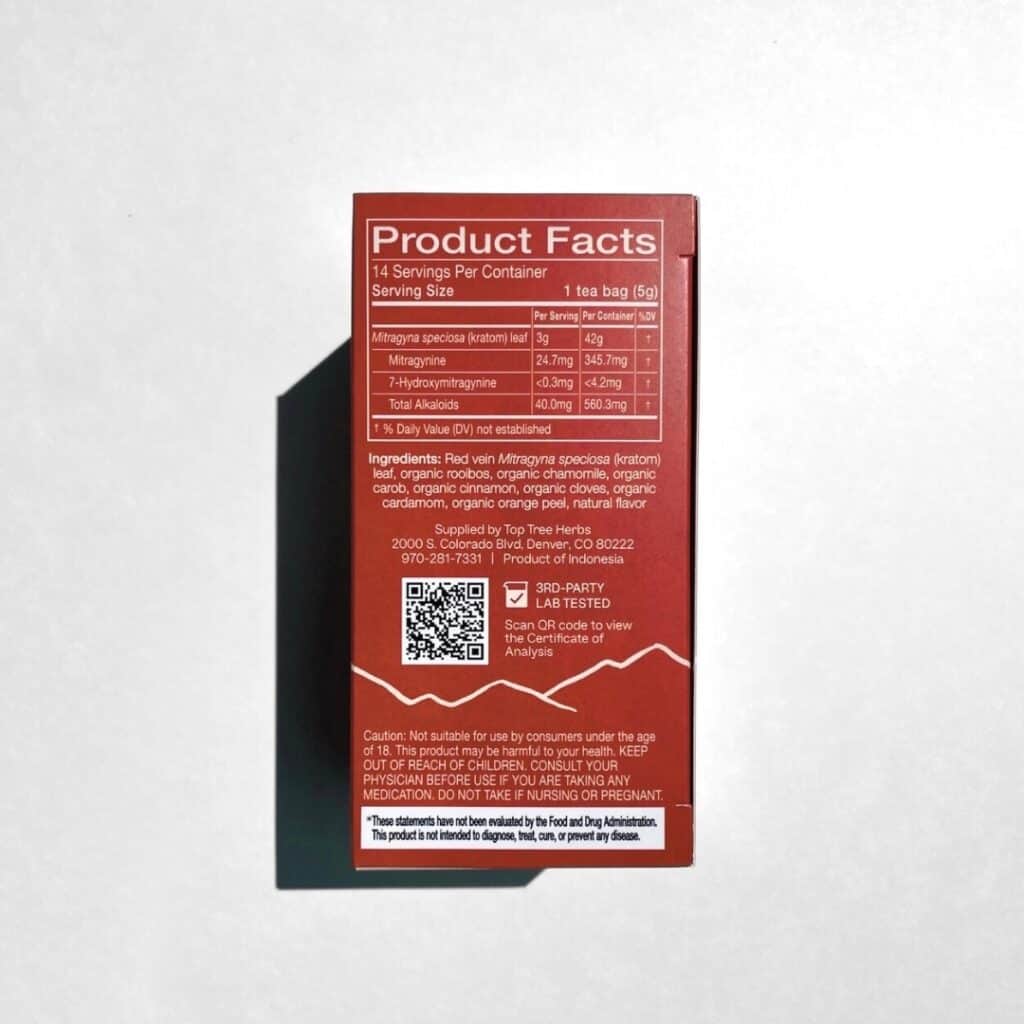 Kratom researchers have conducted a few studies concerning the role kratom alkaloids play in the total effect of kratom, but much more research is needed. Research into kratom has expanded a lot in the last few years, though, so new studies should be on the horizon!Top Tree is intent upon not only making our alkaloid ratios known, but also contributing to the scientific understanding of the effects of these ratios on our tea drinkers.To do so, we partnered with leading kratom scientists out of the University of Florida to conduct a survey of our customers! To learn more about the research, check out our conversation with Hamilton Morris and Dr. Oliver Grundmann.
Kratom researchers have conducted a few studies concerning the role kratom alkaloids play in the total effect of kratom, but much more research is needed. Research into kratom has expanded a lot in the last few years, though, so new studies should be on the horizon!Top Tree is intent upon not only making our alkaloid ratios known, but also contributing to the scientific understanding of the effects of these ratios on our tea drinkers.To do so, we partnered with leading kratom scientists out of the University of Florida to conduct a survey of our customers! To learn more about the research, check out our conversation with Hamilton Morris and Dr. Oliver Grundmann.Which Kratom Tea Variety is Right for Me?
To find the kratom tea that’s right for you, you need to consider not just the vein color and alkaloid profile, but also the serving size. The serving size that’s best for one person might be too large for another, and the serving size that’s best for you in the morning might be different from the one that’s best for you at night. The same is true for other kratom products as well—it’s not unique to tea.Where to Begin
If you’ve never tried kratom before, we recommend that you start with just one tea bag and work your way up from there.With one to three tea bags, you’ll likely feel energized and have a cheery mindset. As you start to brew more tea bags or drink more kratom tea, the effects switch from energizing to calming. Those looking to wind down after a long day typically drink larger serving sizes for this reason.Here are a few tips for helping you choose your tea!- Our white vein kratom teas (called Uplift) are good for replacing caffeine, and we usually reach for them in the morning.
- Our green vein kratom tea bags (called Balance) are best described as being the middle ground between the two ends of kratom’s effects. It is energizing without the intensity of our white kratom teas.
- Our red vein kratom tea (called Unwind) is a great post-workout or pre-bedtime option. It can help you relax at the end of your training session and transition into a calming evening.
How Do I Make Kratom Tea?
Our kratom tea is exceptionally easy to make. You only need three key ingredients. Water, your kratom tea bags, and some lemon juice, either fresh or from concentrate. For equipment, we recommend a kratom tea thermos, but any vacuum insulated thermos will do.To start, place your kratom tea bags into your thermos and add a squeeze of lemon or a splash of lemon juice from concentrate. This addition of an acid is essential to increase the efficiency of the extraction of the active alkaloids from the leaves.
While you are mixing your tea bags and lemon juice in your thermos, you should start boiling some water. Once it reaches a rolling boil, add it to your thermos. The goal is to keep the water as hot as possible for the entire 20-minute steep.
If you’re going to flavor your tea—either with a Top Tree herbal blend or your favorite herbal tea—you have two ways to go about it:
- The easy route is to add it to your thermos with the kratom tea bags from the beginning.
- The second method, designed to optimize the delicate flavors of the additional herbs, is to wait until you have about five minutes of steep time left before adding them. This reduces the amount of bitterness and tannins extracted from the herbs.
After 20 minutes, your tea is ready to go. Simply pour it into your cup, sweeten and enjoy. Plus, you can rebrew the same tea bags again for a second (slightly weaker) tea! Simply add more boiling water to the thermos immediately after pouring the first cup.
A Note About Kratom Science
For those of you who prefer data over general descriptions, you’re in good company. A core pillar of our mission—beyond delivering you the best kratom tea in the world—is ensuring consumer knowledge and access to kratom research (from broad studies about kratom consumer demographics to the lab test results for each of our kratom products)
To that end, we’ve collaborated with Santé Laboratories and Dr. Oliver Grundmann from the University of Florida on an exciting new kratom tea paper. It’s a detailed analysis of kratom tea brewed under different conditions. The final paper will give you a never-before-seen snapshot of how kratom alkaloids make their way from kratom leaves into your cup of tea. The study was done with just one batch of kratom leaves, and kratom does vary from batch to batch, but the findings will nevertheless lay a foundation for all kratom tea drinkers to learn from.
Preliminary results show that brewing in a vacuum thermos with lemon juice has a profound effect on the alkaloid extraction process. In short, if you want strong kratom tea, don’t forget to use a thermos and lemon juice!
When Is the Best Time to Drink Kratom Tea?
When using kratom to exercise, where the goal of consuming kratom is increasing your performance, it’s best to drink it about 30 minutes before starting your workout.
It takes 20 minutes to brew kratom leaves effectively, so you should start brewing your kratom tea about 50-60 minutes before you plan to workout.
Pro Tip: many of us prepare our tea before bed, so it steeps throughout the night is ready by morning. If you start your day at the gym, this is the best ways to brew without delaying getting out the door.
We’ve found that green and white kratom work about equally in energizing us for a workout. Some people also like combining their kratom with caffeine before training, which is a good option as well. In terms of duration, the effects of kratom are generally apparent for about four hours after drinking the tea.
There isn’t a big secret to exercising with kratom (aside from knowing how to brew it and when to drink it). However, we do highly recommend increasing your water consumption when drinking kratom tea. Like coffee, kratom is a diuretic, meaning that it will slightly increase the amount that you urinate. You’ll consume water through the tea (more so than if you did a toss and wash with kratom powder), but the best way to avoid dehydration is still to drink more water than normal.
What does Kratom Tea Feel Like?
Just like coffee, the initial effects are felt as you consume your tea. At smaller servings, most people report feeling more energized and focused. The serving size for increased motivation typically falls in the 2-to-5-gram range.
Note: effects will vary from vender-to-vender, and batch-to-batch, and formulation-to-formulation, so don’t assume you’ll have the exact same experience every time. The best way to overcome that is buying kratom tea online from a vendor that displays the alkaloid content of their products. It helps if you don’t have to bounce around between different subpar head shop kratom brands.
As the serving sizes increase, the effects begin to tilt in the other direction. The energizing effects slowly give way to feelings of calmness and relaxation. At the higher range (5 to 10 grams) the effects are felt most strongly in the body, a soothing feeling that’s great for easing into the evening after a long workout or hard workday.
If you only remember one thing about kratom serving sizes, it should be this: less is more! It’s a common phrase that we totally agree with. In practice, it means that you should find ways to get the effects you want while keeping your serving sizes consistent or decreasing over time, instead of constantly increasing the amount you consume.
Responsible Kratom Consumption Practices
One of the unfortunate aspects of kratom today is the disconnect between what venders say and what you find online if you google “kratom.” And the issue goes both ways: vendors don’t want to acknowledge the potential downsides of kratom, and regulators don’t want to acknowledge its benefits.
In our view, this dynamic impedes normalization and creates an unnecessary conflict between kratom companies and regulators. The Kratom Consumer Protection Act (KCPA) is one solution, which we fully support, but it’s also important we (as consumers) practice responsible kratom consumption.
In other words, moderation is key with kratom! Just like with coffee and caffeine, if you consume more than your body is used to, the effects can quickly go from beneficial to unpleasant. In the extreme, people report feeling hot, nauseous, or dizzy. The solution, once again, is to follow a simple rule of thumb: find your ideal serving size and don’t consume more in any given day.
How Does Top Tree Herbs Ensure the Quality of its Tea?
We founded Top Tree because we wanted kratom tea drinkers to have an option for simple, effective, delicious tea. Before we started Top Tree, crushed-leaf kratom tea bags weren’t an option anywhere. Some companies sold crushed-leaf kratom, but it was a tiny fraction relative to those that sold powder and extracts. As part of our mission, we only use the highest quality kratom on the market. This has a few implications…
First and foremost, all our crushed kratom leaf goes through rigorous lab testing for heavy metals and pathogens (mold, salmonella, etc.), so you know your kratom tea bags are safe to consume. We also test for alkaloid content, a complex process that only a few labs in the country can do.
In addition to testing, all our kratom comes from an AKA-certified vendor who helped establish the cGMP standards for the industry. Many vendors import directly from Southeast Asia, but we decided to work with a leading US kratom brand instead to ensure our kratom is the highest quality possible. We partnered with the most trusted brand in kratom so you know your kratom tea is a truly premium product.
Beyond maintaining high quality standards for all our kratom teas, we work with leading kratom researchers to continue driving kratom research forward. Our goal is to help champion a new approach to kratom, where quality is about more than just the product itself. It’s about supporting sustainable business practices and contributing to the kratom research that is laying the foundation for the future of kratom in America.
What Makes Top Tree Herbs Kratom Tea Bags Special?
What sets us apart from other kratom brands is our commitment to science and tradition.
Kratom is critically understudied, which is why we are engaged in several studies and experiments with labs and scientists across the country. We also believe that the way kratom is commonly consumed in the United States is detrimentally disconnected to tradition, not to mention unpleasant and unsustainable.
The main reason people eat kratom powder is because they were introduced to it without any context for its traditional forms or preparations. Our community is slowly changing the narrative, which is helping re-cast kratom in the proper light: an herbal tea that doesn’t deserve media sensationalism or a negative stigma.
Our mission is improving, sharing, and normalizing kratom tea. We believe in learning by engaging indigenous practices of traditionally consumed plants – and Top Tree tea helps us do exactly that. We’re truly grateful for the opportunity to share kratom tea with you and we hope you enjoy.
With the Right Knowledge, Making the Best Kratom Tea is a Simple Task
We hope you’ve found our kratom tea guide helpful. We love sharing our knowledge of kratom tea with the kratom community. We have many projects planned for the coming months, so stay tuned for more exciting (and data-driven) kratom content down the road.
As we explained today, the best kratom tea should be simple, effective, and delicious. As an herbal tea, it’s a great tool for optimizing your day. Kratom tea has a long traditional of use around the world, and we’re proud to be able to help bring the practice to us kratom consumers.
As you get started on your kratom tea journey, please think of us as a resource. We’re a company of long-time kratom lovers who understand how confusing things can be when you’re new. There’s a lot of conflicting information online, so we hope this guide helps you make well-informed decisions about how you integrate kratom tea into your personal wellness practice.
Please reach out with questions, comments, or concerns. We’re here to help! Until next time, cheers to better brewing!
